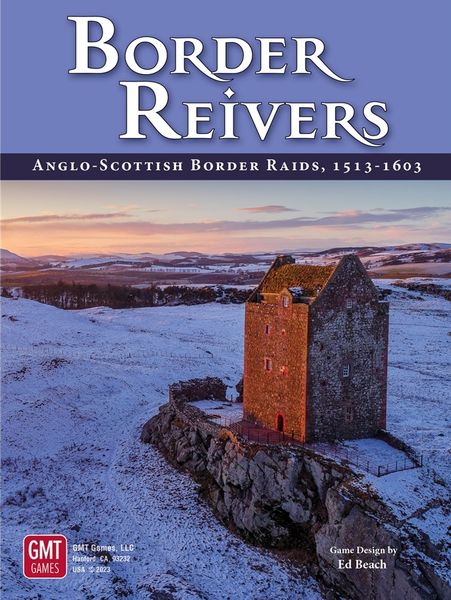Border Reivers: Anglo-Scottish Border Raids, 1513-1603 (2023) Board Game
Brief History and Background Information for Border Reivers: Anglo-Scottish Border Raids, 1513-1603
Border Reivers: Anglo-Scottish Border Raids, 1513-1603 is a board game that delves into the historical context of the conflict-ridden borders between England and Scotland during the 16th century. This period was marked by frequent raids, skirmishes, and battles between rival clans and families, known as the Border Reivers, who sought to assert their control over the region.
Game Components of Border Reivers: Anglo-Scottish Border Raids, 1513-1603
- Game board depicting the border region
- Clan and family cards
- Event cards
- Dice
- Tokens representing influence and control
- Rulebook
How To Setup Border Reivers: Anglo-Scottish Border Raids, 1513-1603
- Place the game board in the center of the table.
- Shuffle the clan and family cards and place them face down.
- Shuffle the event cards and place them in a separate deck.
- Each player chooses a clan or family to represent.
- Place the tokens and dice within reach of all players.
Gameplay Mechanics and Game Objective
In Border Reivers, players take on the roles of rival clans or families, vying for control and influence over the border region. The game utilizes area majority/influence mechanics, dice rolling, end game bonuses, events, and open drafting to simulate the strategic maneuvering and conflict of the time period. The objective is to accumulate the most influence and control over territories by the end of the game.
Player Experience
Pros:
- Engaging historical theme
- Strategic depth and replayability
- Interactive gameplay mechanics
- Opportunity for player diplomacy and negotiation
Cons:
- High learning curve for new players
- Game length may be too long for some
- Limited player interaction in certain scenarios
Personal Thoughts on Border Reivers: Anglo-Scottish Border Raids, 1513-1603
Border Reivers: Anglo-Scottish Border Raids, 1513-1603 offers a unique and immersive experience for players interested in Renaissance-era conflicts and territorial struggles. The game’s components are well-designed, and the thematic integration is strong. However, the game’s complexity may be daunting for casual players, and the gameplay may drag on at times. Overall, for history buffs and strategy enthusiasts, Border Reivers is worth exploring, but it may not appeal to everyone due to its niche subject matter and gameplay style.
Game Components of Border Reivers: Anglo-Scottish Border Raids, 1513-1603
How To Setup Border Reivers: Anglo-Scottish Border Raids, 1513-1603
Setting up Border Reivers involves distributing the player boards, placing the game map, and shuffling the various card decks. Each player selects a riding family (Grey, Fenwick, Dacre, Maxwell, Kerr, or Hume) and places their Family Castle and Farm Regions on the map. The game also requires setting up the Gaol in each major town and preparing the defensive assets and resources.
Gameplay Mechanics and Game Objective
Player Experience
Playing Border Reivers immerses you in the world of 16th-century border raids, where you must balance resource management, defensive strategies, and aggressive actions to outdo your opponents. The game is known for its simultaneous actions, minimizing downtime and keeping all players engaged throughout. The mix of historical events and dynamic combat mechanics adds a layer of complexity and excitement.
Pros
Cons
Personal Thoughts on Border Reivers: Anglo-Scottish Border Raids, 1513-1603
Border Reivers is ideally suited for fans of wargames and area control, particularly those interested in historical settings and complex strategic gameplay. While it may not offer the highest degree of flexibility in strategy, its balanced mechanics and immersive theme make it a compelling choice for groups of 4 or 6 players. However, players who prefer games with less randomness and more consistent outcomes might find the dice-based combat resolution challenging. Overall, it’s a game that rewards careful planning, strategic alliances, and a bit of luck.
We are supported by our audience. When you purchase through links on our site, we may earn an affiliate commission, at no extra cost for you. Learn more.

